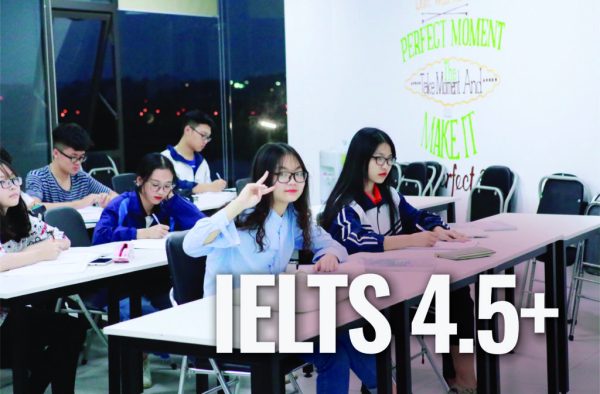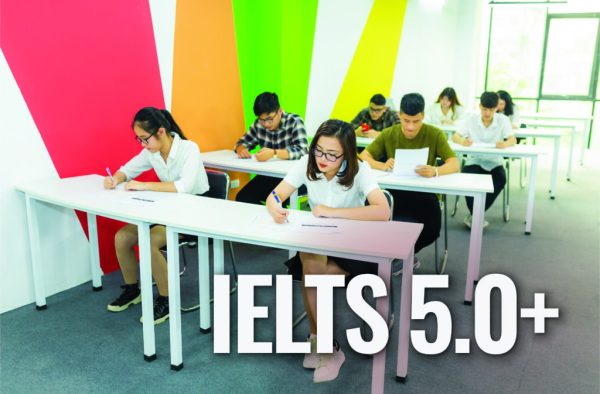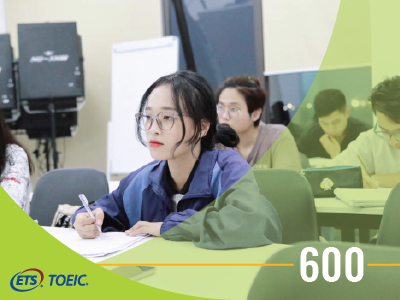Nhận tư vấn về lộ trình học
The Future of Work
21 Tháng Chín, 2023 | 917 lượt xem
Giải đề IELTS Reading Cambridge 16. Test 1. Passage 3. The Future of Work. Tương Lai Của Công Việc.

(Đoạn 1)
According to a leading business consultancy, (Question 27) 3—14% of the global workforce will need to switch to a different occupation within the next 10-15 years, and all workers will need to adapt as their occupations evolve alongside increasingly capable machines. Automation – or ‘embodied artificial intelligence’ (Al) – is one aspect of the disruptive effects of technology on the labour market. ‘Disembodied Al’, like the algorithms running in our smartphones, is another.
Theo một công ty tư vấn kinh doanh hàng đầu, từ 3% đến 14 % lực lượng lao động toàn cầu sẽ cần chuyển sang một công việc khác trong vòng 10 – 15 năm tới, và tất cả người lao động sẽ cần phải thích nghi vì nghề nghiệp của họ sẽ phải thay đổi theo sự cải tiến của máy móc. Tự động hóa – hay “trí tuệ nhân tạo” (AI) – là một trong những yếu tố công nghệ gây ra sự rối loạn trong thị trường lao động . “Disembodied Al”, giống như các thuật toán vận hành trong điện thoại thông minh, lại là một nhân tố ảnh hưởng khác.
(Đoạn 2)
Dr Stella Pachidi from Cambridge Judge Business School believes that (Question 28) some of the most fundamental changes are happening (Question 31) as a result of the ‘algorithmication’ of jobs that are dependent on data rather than on production – the so-called knowledge economy. Algorithms are capable of learning from data to undertake tasks that previously needed human judgement, such as reading legal contracts, analysing medical scans and gathering market intelligence.
Tiến sĩ Stella Pachidi từ đại học Kinh Doanh Cambrige Judge tin rằng một trong số những thay đổi thiết yếu nhất đang xảy ra là kết quả của việc “thuật toán hóa” những công việc mà phụ thuộc vào dữ liệu hơn là những việc phụ thuộc vào việc sản xuất – cái được gọi là nền kinh tế tri thức. Các thuật toán có khả năng học hỏi từ dữ liệu để thực hiện các nhiệm vụ mà trước đây cần đến sự đánh giá của con người, chẳng hạn như đọc các hợp đồng pháp lý, phân tích hình ảnh y khoa và thu thập thông tin tình báo thị trường.
(Đoạn 3)
‘In many cases, they can outperform humans,’ says Pachidi. (Question 36) ‘Organisations are attracted to using algorithms because they want to make choices based on what they consider is “perfect information”, as well as to reduce costs and enhance productivity.’
Pachidi nói: “Trong nhiều trường hợp, chúng có thể làm tốt hơn con người.” “Các tổ chức bị thu hút bởi việc sử dụng các thuật toán bởi vì họ muốn đưa ra các lựa chọn dựa trên những gì họ coi là “thông tin hoàn hảo”, cũng như để giảm thiểu chi phí và nâng cao năng suất lao động.”
(Đoạn 4)
‘But these enhancements are not without consequences,’ says Pachidi. ‘If routine cognitive tasks are taken over by Al, how do professions develop their future experts?’ she asks. ‘One way of learning about a job is “legitimate peripheral participation” – a novice stands next to experts and learns by observation. If this isn’t happening, then you need to find new ways to learn.’
Pachidi nói : “Nhưng những sự cải tiến này không phải là không có hậu quả.” “ Nếu các nhiệm vụ nhận thức thông thường được đảm nhận bởi Al thì làm thế nào các ngành nghề phát triển được các chuyên gia trong tương lai ?” Bà đặt câu hỏi. “Một cách để học về một công việc là “sự tham gia hợp pháp ngoài biên” – một người mới vào nghề làm việc bên cạnh các chuyên gia và học bằng cách quan sát. Nếu điều này không xảy ra , thì bạn cần phải tìm những cách mới để học.”
(Đoạn 5)
Another issue is the extent to which the technology influences or even controls the workforce. For over two years, Pachidi monitored a telecommunications company. ‘The way telecoms salespeople work is through personal and frequent contact with clients, using the benefit of experience to assess a situation and reach a decision. (Question 29) However, the company had started using a[n] … algorithm that defined when account managers should contact certain customers about which kinds of campaigns and what to offer them.’
Một vấn đề khác là mức độ mà công nghệ ảnh hưởng hoặc thậm chí kiểm soát lực lượng lao động. Trong vòng hơn hai năm , Pachidi đã quan sát một công ty viễn thông. “Cách nhân viên tiếp thị qua điện thoại làm việc là thông qua việc liên lạc cá nhân và thường xuyên với các khách hàng, tận dụng lợi thế của kinh nghiệm để đánh giá một tình huống và đi đến quyết định. Tuy nhiên, công ty đã bắt đầu sử dụng một thuật toán mà xác định được thời điểm nhân viên quản lí tài khoản nên liên hệ với những khách hàng nhất định về loại hình chiến dịch nào và những gì sẽ cung cấp cho họ.
(Đoạn 6)
The algorithm – usually built by external designers – often becomes the keeper of knowledge, she explains. In cases like this, Pachidi believes, a short-sighted view begins to creep into working practices whereby workers learn through the ‘algorithm’s eyes’ and (Question 32) become dependent on its instructions. (Question 33) Alternative explorations – where experimentation and human instinct lead to progress and new ideas – are effectively discouraged.
Thuật toán – thường được xây dựng bởi các nhà lập trình bên ngoài – thường trở thành người giữ kiến thức, bà giải thích . Trong những trường hợp như này, Pachidi tin rằng, một các hnhìn thiển cận bắt đầu len lỏi vào thực tiễn công việc, theo đó những người lao động học hỏi thông qua “con mắt thuật toán” và trở nên phụ thuộc vào các hướng dẫn của nó. Sự khám phá thay thế – nơi thử nghiệm và bản năng con người dẫn đến các ý tưởng mới tiến bộ – thực sự không được khuyến khích.
(Đoạn 7)
Pachidi and colleagues even observed people developing strategies to make the algorithm work to their own advantage. ‘We are seeing cases where workers feed the algorithm with false data to reach their targets,’ she reports.
Pachidi và các đồng nghiệp thậm chí còn quan sát mọi người phát triển những chiến lược để làm cho thuật toán hoạt động theo lợi ích của họ. “Chúng tôi đang chứng kiến những trường hợp mà nhân viên cung cấp dữ liệu sai cho thuật toán để đạt được mục tiêu của họ.” Bà báo cáo.
(Đoạn 8)
It’s scenarios like these that many researchers are working to avoid. (Question 34) Their objective is to make Al technologies more trustworthy and transparent, so that organisations and individuals understand how Al decisions are made. In the meantime, says Pachidi, (Question 38) ‘We need to make sure we fully understand the dilemmas that this new world raises regarding expertise, occupational boundaries and control.’
Đây là những tình huống mà nhiều nhà nghiên cứu đang cố gắng tránh. Mục tiêu của họ là làm cho những công nghệ Al trở nên đáng tin cậy và minh bạch hơn, để mà các tổ chức và cá nhân hiểu được cách Al đưa ra quyết định. Trong khi đó, Pachidi nói rằng “Chúng ta cần chắc chắn rằng chúng ta hiểu đầy đủ các tình huống khó xử mà thế giới mới này đặt ra liên quan đến chuyên môn, những ranh giới nghề nghiệp và kiểm soát.”
(Đoạn 9)
Economist Professor Hamish Low believes that the future of work will involve major transitions across the whole life course for everyone: (Question 39) ‘The traditional trajectory of full-time education followed by full-time work followed by a pensioned retirement is a thing of the past,’ says Low. Instead, he envisages a multistage employment life: one where retraining happens across the life course, and where multiple jobs and no job happen by choice at different stages.
Giáo sư kinh tế học Hamish Low tin rằng tương lai của công việc sẽ liên quan đến những chuyển đổi lớn trong suốt cuộc đời của mỗi con người. “Quỹ đạo truyền thống của giáo dục toàn thời gian theo đó là làm việc toàn thời gian tiếp sau đó là sự nghỉ hưu có lương là một điều dĩ vãng.” Low nói. Thay vào đó, ông ấy hình dung đến một cuộc sống làm việc có nhiều giai đoạn: một nơi mà việc tái đào tạo diễn ra trong suốt cuộc đời và một nơi mà nhiều công việc và không có công việc nào xảy ra theo lựa chọn ở các thời điểm khác nhau.
(Đoạn 10)
(Question 35) On the subject of job losses, Low believes the predictions are founded on a fallacy: ‘It assumes that the number of jobs is fixed. If in 30 years, half of 100 jobs are being carried out by robots, that doesn’t mean we are left with just 50 jobs for humans. The number of jobs will increase: we would expect there to be 150 jobs.’
Về chủ đề mất việc làm, Low tin rằng các dự đoán được dựa trên một ngụy biện rằng: “Nó giả định rằng số lượng việc làm là cố định. Nếu trong 30 năm tới, một nửa trong số 100 công việc được tiến hành bởi robot, điều đó không có nghĩa là chúng ta chỉ còn lại 50 công việc cho con người. Số lượng công việc sẽ tăng lên: chúng tôi mong đợi có 150 công việc .”
(Đoạn 11)
Dr Ewan McGaughey, at Cambridge’s Centre for Business Research and King’s College London, agrees that ‘apocalyptic’ views about the future of work are misguided. ‘It’s the laws that restrict the supply of capital to the job market, not the advent of new technologies that causes unemployment.’
Tiến sĩ Ewan McGaughey, tại Trung tâm Nghiên cứu Kinh doanh Cambridge và Đại học King London đồng ý rằng quan điểm “ngày tận thế” về tương lai của việc làm là sai lầm. “Đó là các điều luật hạn chế sự cung cấp vốn cho thị trường việc làm chứ không phải sự ra đời của các công nghệ mớ gây ra sự thất nghiệp”.
(Đoạn 12)
(Question 37) His recently published research answers the question of whether automation, Al and robotics will mean a ‘jobless future’ by looking at the causes of unemployment. ‘History is clear that change can mean redundancies. (Question 30) But social policies can tackle this through retraining and redeployment.’
Nghiên cứu được công bố gần đây của ông trả lời cho câu hỏi liệu việc tự động hóa, Al và robot có đồng nghĩa với một “tương lai thất nghiệp” hay không bằng xem xét các nguyên nhân gây ra sự thất nghiệp. “Lịch sử rõ ràng rằng sự thay đổi có thể có ý nghĩa dư thừa nhân công. Nhưng các chính sách xã hội có thể giải quyết vấn đề này thông qua việc tái đào tạo và triển khai lại .”
(Đoạn 13)
He adds: ‘If there is going to be change to jobs as a result of Al and robotics then I’d like to see governments seizing the opportunity to improve policy to enforce good job security. We can “reprogramme” the law to prepare for a fairer future of work and leisure.’ (Question 40) McGaughey’s findings are a call to arms to leaders of organisations, governments and banks to pre-empt the coming changes with bold new policies that guarantee full employment, fair incomes and a thriving economic democracy.
Ông bổ sung thêm: “ Nếu có sự thay đổi về công việc như là kết quả của Al và robot thì tôi muốn chứng kiến chính phủ nắm bắt lấy cơ hội để cải thiện chính sách nhằm thực hiện đảm bảo việc làm tốt. Chúng ta có thể “thiết lập lại” luật để chuẩn bị cho một tương lai công bằng hơn giữa công việc và sự giải lao .” Những phát hiện của McGaughey là lời kêu gọi các nhà lãnh đạo của các tổ chức, chính phủ và ngân hàng đón đầu những thay đổi sắp tới với các chính sách mới táo bạo đảm bảo việc làm đầy đủ, thu nhập công bằng và một nền kinh tế dân chủ thịnh vượng.
(Đoạn 14)
‘The promises of these new technologies are astounding. They deliver humankind the capacity to live in a way that nobody could have once imagined,’ he adds. ‘Just as the industrial revolution brought people past subsistence agriculture, and the corporate revolution enabled mass production, a third revolution has been pronounced. But it will not only be one of technology. The next revolution will be social.’
Sự hứa hẹn của những công nghệ mới này thật đáng kinh ngạc. Chúng cung cấp cho nhân loại khả năng sống theo cách mà không ai có thể từng tưởng tượng được.” Ông nói thêm. “ Cũng như Cách mạng công nghiệp mang lại cho con người nền nông nghiệp tự cung tự cấp trong quá khứ và cuộc cách mạng doanh nghiệp đã cho phép sản xuất hàng loạt thì một cuộc cách mạng thứ ba đã được công bố. Nhưng nó sẽ không chỉ là một trong những công nghệ. Cuộc cách mạng tiếp theo sẽ mang tính xã hội.”
Danh mục
IELTS Reading. Questions 27-30
Questions 27-30
Choose the correct letter, A, B, C or D.
Write the correct letter in boxes 27-30 on your answer sheet.
Giải thích đáp án các câu 27-30
27 The first paragraph tells us about
A the kinds of jobs that will be most affected by the growth of AI.
B the extent to which AI will alter the nature of the work that people do.
C the proportion of the world’s labour force who will have jobs in AI in the future.
D the difference between ways that embodied and disembodied AI with impact on workers.
=> Đáp án câu 27. B
Giải thích: Dẫn chứng trong đoạn 1:
Chỉ có thông tin về câu B. 3-14% lực lượng lao động sẽ phải chuyển sang công việc khác trong 10-15 năm = The extent = 3-14%; alter the nature of the work = switch to a different occupation
28 According to the second paragraph, what is Stella Pachidi’s view of the ‘knowledge economy’?
A It is having an influence on the number of jobs available.
B It is changing people’s attitudes towards their occupations.
C It is the main reason why the production sector is declining.
D It is a key factor driving current developments in the workplace.
=> Đáp án câu 28. D
Giải thích: Dẫn chứng trong đoạn 2:
some of the most fundamental changes = key factors
as a result of = driving
current developments in the workplace = the ‘algorithmication’ of jobs
that are dependent on data rather than on production – the so-called knowledge economy = It is
29 What did Pachidi observe at the telecommunications company?
A staff disagreeing with the recommendations of AI
B staff feeling resentful about the intrusion of AI in their work
C staff making sure that AI produces the results that they want
D staff allowing AI to carry out tasks they ought to do themselves
=> Đáp án câu 29. C
Giải thích: Dẫn chứng trong đoạn 5:
the company had started using a[n] … algorithm = AI
when account managers should contact certain customers about which kinds of campaigns and what to offer them. = the results that they want
30 In his recently published research, Ewan McGaughey
A challenges the idea that redundancy is a negative thing.
B shows the profound effect of mass unemployment on society.
C highlights some differences between past and future job losses.
D illustrates how changes in the job market can be successfully handled.
=> Đáp án câu 30. D
=> Giải thích: dẫn chứng trong đoạn 12 và 13
changes in the job market = change can mean redundancies – this
can be successfully handled = can tackle
He adds: ‘If there is going to be change to jobs as a result of Al and robotics then I’d like to see governments seizing the opportunity to improve policy to enforce good job security. We can “reprogramme” the law to prepare for a fairer future of work and leisure!
IELTS Reading. Questions 31-34
Questions 31-34
Complete the summary using the list of words, A-G, below.
Write the correct letter, A-G, in boxes 31-34 on your answer sheet.
The ‘algorithmication’ of jobs
Stella Pachidi of Cambridge Judge Business School has been focusing on the ‘algorithmication’ of jobs which rely not on production but on 31 …………………. .
While monitoring a telecommunications company, Pachidi observed a growing 32 …………………. on the recommendations made by AI, as workers begin to learn through the ‘algorithm’s eyes’. Meanwhile, staff are deterred from experimenting and using their own 33 …………………., and are therefore prevented from achieving innovation.
To avoid the kind of situations which Pachidi observed, researchers are trying to make AI’s decision-making process easier to comprehend, and to increase users’ 34 …………………. with regard to the technology.
A pressure B satisfaction C intuition
D promotion E reliance F confidence
G information
Giải thích đáp án các câu 31-34
31. G (information)
Giải thích: Dẫn chứng trong đoạn 2
data = information
the ‘algorithmication’ of jobs which rely not on production but on information = are dependent on data rather than on production
32. E (reliance)
Giải thích: Dẫn chứng trong đoạn 6:
a growing reliance on the recommendations made by AI
= become dependent on its instructions
33. C (intuition)
Giải thích: Dẫn chứng trong đoạn 6:
staff are deterred from = prevented from
experimenting and using their own intuition = experimentation and human instinct
achieving innovation = lead to progress and new ideas
34. F (confidence)
Giải thích: Dẫn chứng trong đoạn 8:
increase users’ confidence = make AI technologies more trustworthy and transparent, so that organisations and individuals understand how AI decisions are made… expertise, occupational boundaries and control.
IELTS Reading. Questions 35-40
Questions 35-40
Look at the following statements (Questions 35-40) and the list of people below.
Match each statement with the correct person, A, B or C.
Write the correct letter, A, B or C, in boxes 35-40 on your answer sheet.
NB You may use any letter more than once.
35 Greater levels of automation will not result in lower employment.
36 There are several reasons why AI is appealing to businesses.
37 AI’s potential to transform people’s lives has parallels with major cultural shifts which occurred in previous eras.
38 It is important to be aware of the range of problems that AI causes.
39 People are going to follow a less conventional career path than in the past.
40 Authorities should take measures to ensure that there will be adequately paid work for everyone
| List of peopleA Stella PachidiB Hamish LowC Ewan McGaughey |
Giải thích đáp án các câu 35-40
35: B
Giải thích: Dẫn chứng trong đoạn 10
- Đọc câu: “On the subject of job losses, Low believes the predictions are founded on a fallacy: ‘It assumes that the number of jobs is fixed. If in 30 years, half of 100 jobs are being carried out by robots, that doesn’t mean we are left with just 50 jobs for humans. The number of jobs will increase: we would expect there to be 150 jobs.”
- Dẫn chứng trong lời của Low: the number of jobs is fixed = not result in lower employment.
36: A
Giải thích: Dẫn chứng trong đoạn 3
- Đọc câu: “‘In many cases, they can outperform humans, says Pachidi. ‘Organisations are attracted to using algorithms because they want to make choices based on what they consider is “perfect information”, as well as to reduce costs and enhance productivity.”
- Dẫn chứng trong lời của Pachidi:
- businesses = organisations
- appealing = are attracted to
- reasons = want to make choices based on what they consider is “perfect information” + to reduce costs + enhance productivity
37: C
Giải thích: Dẫn chứng trong đoạn 12
- Đọc câu: “His recently published research answers the question of whether automation, Al and robotics will mean a ‘jobless future’ by looking at the causes of unemployment. ‘History is clear that change can mean redundancies. But social policies can tackle this through retraining and redeployment.” (Ewan McGaughey)
- Dẫn chứng từ lời nói của Ewan McGaughey:
- in the past = in previous eras
- ‘jobless future’ + causes of unemployment + redundancies = transform people’s lives
38: A
Giải thích: Dẫn chứng trong đoạn 8
- Đọc câu: “‘We need to make sure we fully understand the dilemmas that this new world raises regarding expertise, occupational boundaries and control!” (Stella Pachidi)
- Dẫn chứng từ lời nói của Stella Pachidi:
- We need to make sure = It is important
- we fully understand = to be aware of
- dilemmas + expertise, occupational boundaries and control = the range of problems that AI causes
39: B
Giải thích: Dẫn chứng trong đoạn 9
- Đọc câu: “The traditional trajectory of full-time education followed by full-time work followed by a pensioned retirement is a thing of the past.” says Low. Instead, he envisages a multistage employment life…”
- Dẫn chứng từ lời nói của Low:
- The traditional trajectory of full-time education followed by full-time work followed by a pensioned retirement = conventional career path
- is a thing of the past = are going to follow a less
40: C
Giải thích: Dẫn chứng trong đoạn 13
- Đọc câu: “McGaughey’s findings are a call to arms to leaders of organisations, governments and banks to pre-empt the coming changes with bold new policies that guarantee full employment, fair incomes and a thriving economic democracy.”
- Dẫn chứng từ lời nói của Ewan McGaughey:
- leaders of organisations, governments and banks = Authorities
- pre-empt the coming changes with bold new policies = should take measures
- guarantee full employment = to ensure that there will be adequately paid work for everyone
Bí quyết chinh phục IELTS Reading
Để đạt điểm cao trong IELTS Reading, bạn nên nắm rõ tips và chiến lược để làm bài với từng dạng đề cụ thể. Dù scanning và skimming là 2 kỹ năng nhất định phải dùng trong bài thi IELTS nhưng tùy từng dạng, chúng ta sẽ áp dụng ở những bước khác nhau.
Hãy tiếp tục theo dõi chuyên mục IELTS Reading của Universal Language Center và cùng tìm hiểu bí quyết chinh phục từng dạng đề thi IELTS Reading bạn nhé!
Để liên tục đánh giá trình độ hiện tại, hãy tham khảo bài thi tại đây: http://m.me/universal.edu.vn/
Hoặc tham dự thi thử bài thi IELTS IDP miễn phí tại các cơ sở của Universal Language Center:
- Cơ Sở 01: 262 Lạc Trung, Hai Bà Trưng, Hà Nội
- Cơ Sở 02: 114 Hoàng Như Tiếp, Long Biên, Hà Nội
- Cơ Sở 03: 12/36 Phan Kế Bính, Ba Đình, Hà Nội
- Cơ Sở 04: 619 Nguyễn Văn Cừ, Long Biên, Hà Nội
- Cơ Sở 05: 23 Tô Vĩnh Diện, Thanh Xuân, Hà Nội
- Cơ Sở 06: 222 Lý Nam Đế, Tân Quang, Tuyên Quang
- VPTNĐK: 1/58 Việt Hưng, Long Biên, Hà Nội
Tham khảo khóa học IELTS Cam kết đầu ra 7.5+ tại Universal: https://universal.edu.vn/khoa-hoc/khoa-hoc-ielts-mastery/
ĐĂNG KÝ NHẬN TIN






